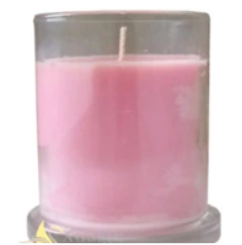GASP! Why does my candle have a wet spot?Updated a year ago
In candle making, a 'wet spot' refers to an air pocket that occurs as the wax is cooling causing the wax to pull away from the containers edge. Wax expands when it heats up and contracts as it cools. Part of the wax pulls away from the glassware and sticks to the container giving it the look pictured below.



Candles usually experience small temperature changes throughout their life cycle. Whenever there is a the temperature change, it increases the likelihood of candle wax pulling away from the jar sides. While the most noticeable volume change happends right after pouring the candle, you may also notice the pulling during the curing, shipping, and even while storing your candle. While wet spots can be visually unappealing, they do not affect the burn performance of a candle. If you find that you have wet spot that needs covering you can always put your label in that spot to cover the wet spot.
Using concentrated heat; with a heat gun, on the wet spots will melt the wax enough to fill in the voided areas and pushes the air to the top of the candle but can end up causing more problems than it solves. It is more common with paraffin wax but can also occur with soy. To help minimize this problem, below are some causes and prevention tips that can help:
| Causes |
|
|
|
|
| Preventative Tips |
|
|
|
|
|
|
|
|
|
|
|
|